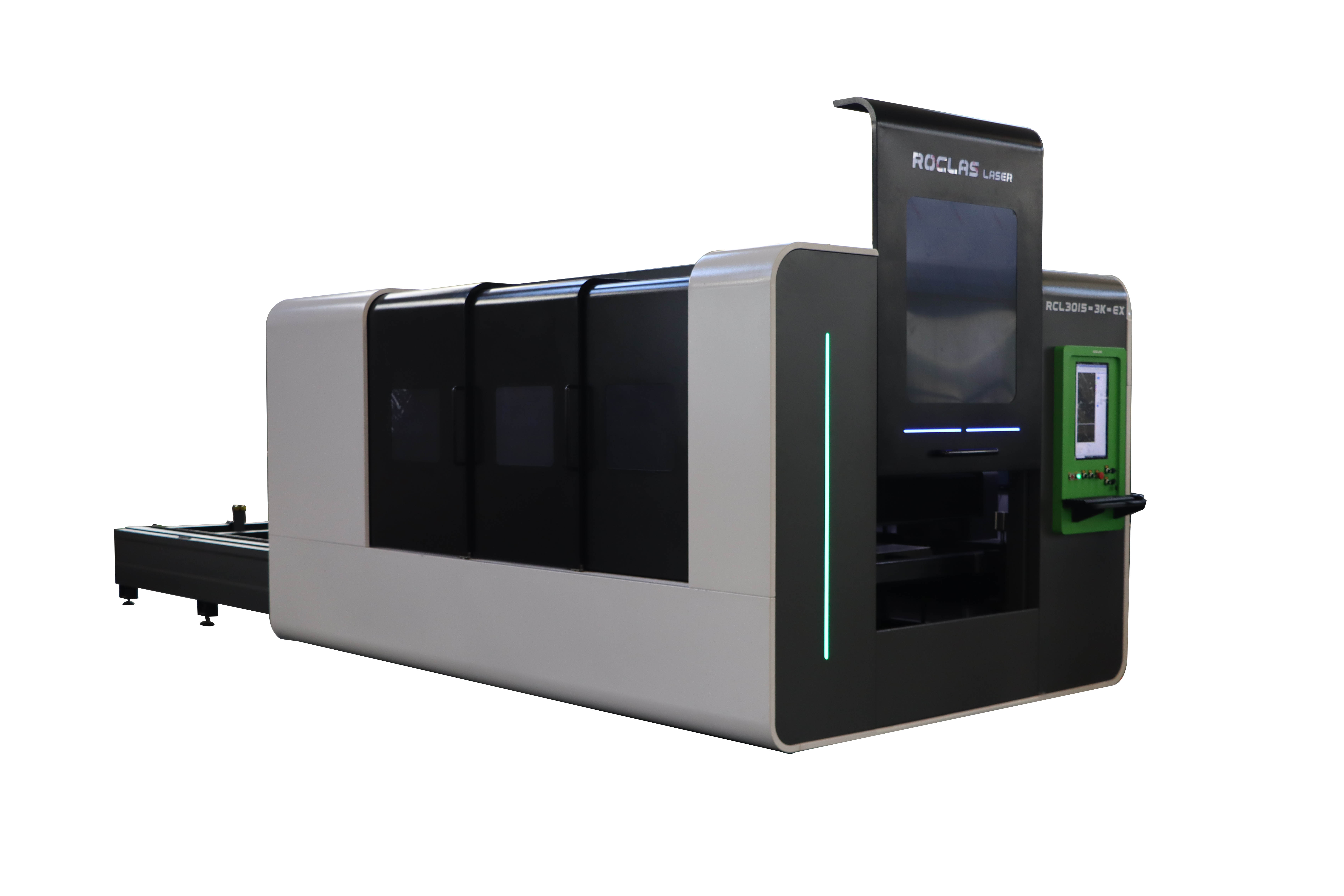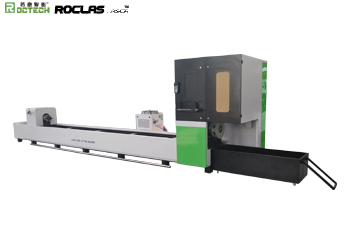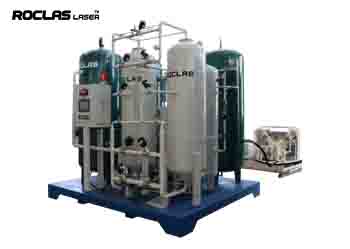레이저 절단기는 이미 제조업에서 공예미술에 이르기까지 각 업종에서 없어서는 안 될 도구가 되었다.그것들의 정밀도, 속도, 다기능성은 금속, 목재, 플라스틱 등을 포함한 각종 재료를 절단하는 데 가장 좋은 선택이 되었다.그러나 기업과 개인이 레이저 절단기에 투자하기 전에 고려하는 가장 중요한 요소 중 하나는 비용입니다.이 문서에서는 레이저 절단기의 비용에 영향을 미치는 다양한 측면에 대해 자세히 살펴보고 현명한 결정을 내릴 수 있도록 도와줍니다.
1. 레이저 절단기의 유형
레이저 절단기의 비용은 대부분 그 유형에 달려 있다.레이저 절단기는 주로 세 가지 유형이 있습니다.
- CO2 레이저 절단기: 가장 일반적이고 일반적인 유형이며 다양한 재료를 절단, 조각 및 표시하는 데 적합합니다.일반적으로 다른 유형보다 저렴하지만 정기적인 급유가 필요하기 때문에 유지 관리 비용이 더 들 수 있습니다.

- 광섬유 레이저 절단기: 광섬유 레이저는 특히 금속 절단에 적합한 효율과 정밀도로 유명합니다.그들은 이산화탄소 레이저보다 더 비싸지만 운영 비용은 낮고 수명은 더 길다.
-Nd: YAG/Nd: YVO4 레이저 절단기: 의료 및 항공 우주 산업과 같은 고정밀 어플리케이션을 위한 전용 기계입니다.선진적인 기술과 전문적인 용례 때문에 그것들은 가장 비싼 유형이다.
2. 전력 및 성능

와트로 측정된 레이저의 전력은 레이저 절단기 비용을 결정하는 중요한 요소입니다.더 높은 와트력 기계는 더 두께하고 더 견고한 재료를 절단할 수 있지만, 그들은 또한 더 높은 가격으로 제공됩니다.예를 들어, 100W CO2 레이저 커터는 약 5,000달러, 150W 모델은 10,000달러 이상 될 수 있습니다.더 효율적인 섬유 레이저는 1kW 기계에 대해 약 20,000달러에서 시작할 수 있으며 산업용 등급 모델에 대해 100,000 달러 이상까지 가질 수 있습니다.
3. 기계 크기 및 작업 영역

The size of the laser cutting machine and its work area also impact the cost. Larger machines with bigger work areas are more expensive because they require more materials and advanced engineering to ensure stability and precision. For example, a desktop laser cutter with a small work area might cost around $3,000, while a large-format industrial machine could cost $50,000 or more.
4. Brand and Manufacturer
The brand and manufacturer of the laser cutting machine play a crucial role in its cost. Well-known brands with a reputation for quality and reliability, such as Trumpf, Amada, and Bystronic, often charge a premium for their machines. On the other hand, lesser-known brands or Chinese manufacturers may offer more affordable options, but the quality and after-sales support can vary significantly.
5. Additional Features and Accessories
Laser cutting machines come with a range of additional features and accessories that can influence the overall cost. Some of these include:
- Automatic Focus: This feature adjusts the laser focus automatically, ensuring consistent cutting quality. It adds to the cost but can significantly improve efficiency.
- Rotary Attachment: A rotary attachment allows for the cutting and engraving of cylindrical objects, such as bottles and tubes. This accessory can add several thousand dollars to the machine's price.
- Cooling System: High-powered lasers generate a lot of heat and require an efficient cooling system. Water-cooled systems are more expensive than air-cooled ones but are essential for maintaining the machine's performance and longevity.
- Software: The software that controls the laser cutter can also affect the cost. Advanced software with more features and better user interfaces tends to be more expensive but can enhance the machine's capabilities and ease of use.
6. Operating Costs
While the initial purchase price is a significant consideration, it's also essential to factor in the operating costs of a laser cutting machine. These include:
- Energy Consumption: Higher-powered machines consume more electricity, leading to higher energy bills. Fiber lasers are generally more energy-efficient than CO2 lasers, which can offset their higher initial cost over time.
- Maintenance: Regular maintenance is crucial for keeping a laser cutter in optimal condition. This includes replacing laser tubes, mirrors, lenses, and other consumables. CO2 lasers, in particular, require more frequent maintenance, which can add to the overall cost.
- Gas and Consumables: CO2 lasers require a constant supply of gas (usually CO2, nitrogen, or helium) to operate, which can be a recurring expense. Fiber lasers, on the other hand, do not require gas, reducing their operating costs.
7. Market Trends and Demand
The cost of laser cutting machines can also be influenced by market trends and demand. For example, the increasing adoption of automation and Industry 4.0 technologies has led to a surge in demand for advanced laser cutting machines, driving up prices. Conversely, economic downturns or increased competition among manufacturers can lead to lower prices.
8. Used vs. New Machines
Another factor to consider is whether to purchase a new or used laser cutting machine. Used machines can be significantly cheaper, but they may come with hidden costs, such as the need for repairs or upgrades. It's essential to thoroughly inspect a used machine and consider its remaining lifespan before making a purchase.
9. Financing and Leasing Options
For businesses that cannot afford the upfront cost of a laser cutting machine, financing and leasing options are available. These can spread the cost over several years, making it more manageable. However, it's important to consider the interest rates and terms of the financing agreement, as they can add to the overall cost.
10. Return on Investment (ROI)
Finally, when considering the cost of a laser cutting machine, it's crucial to evaluate the potential return on investment (ROI). A more expensive machine with higher capabilities may lead to increased productivity, reduced material waste, and the ability to take on more complex projects, ultimately generating more revenue. It's essential to weigh the initial cost against the potential long-term benefits.
Conclusion
The cost of a laser cutting machine is influenced by a multitude of factors, including the type of laser, power, size, brand, additional features, operating costs, market trends, and whether the machine is new or used. Understanding these factors can help you make an informed decision that aligns with your budget and business needs. While the initial investment may be significant, the precision, efficiency, and versatility of laser cutting machines can offer substantial long-term benefits, making them a valuable asset for any business involved in cutting and engraving.
일반적인 조언이나 특정 지원이 필요하든 상관없이, 우리는 당신을 도와드릴 것입니다.